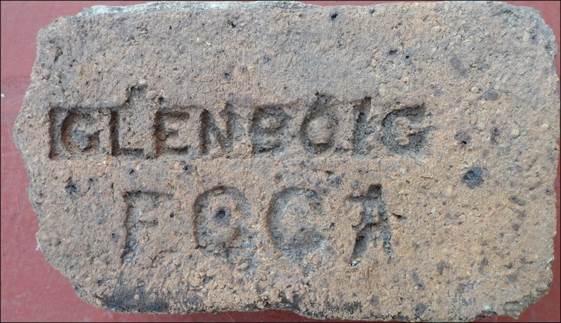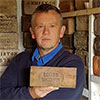From the mid-19th century and during the whole of the 20th century, Scotland exported vast quantities of fired clay products manufactured at Scottish brick and tile works.
Such products took many forms, including firebricks, salt glazed water pipes and sewer pipes, animal feed troughs and a multitude of other clay related items. These were in much demand all over the world, such was the quality of the Scottish fire clay, particularly the fire clay from Fife, into the Lothians, across the central belt to Lanarkshire and down into Ayrshire. The refractoriness of the clay (its ability to retain its physical shape and chemical identity when subjected to high temperatures) produced hard, quality products. Firebricks in particular were sought after to build furnaces, kilns, stoves, ovens and to line boilers and fireplaces all over the world
These fired clay products knitted together so many different areas of Scottish history – industrial, agricultural, social, economic and military, to name a few. Of course due to the export value of the products such items went on to forge historical links with the rest of the world
I have found many, many interesting examples and stories relating to the export of Scottish fire clay products but for this blog post I have decided to concentrate on a narrow avenue of interest which involves firebricks manufactured in Scotland for the South American railway systems
From the mid to late 1800s, the South American railway systems were being built at a great rate. The British influence was huge due to the involvement of British financiers, engineers, iron and steel makers… and where there is iron and steel there are firebrick manufacturers, and where there are trains and locomotives there are firebrick manufacturers, making bricks to line fireboxes, foundries and furnaces
Through research, I have been able to confirm that Scottish firebrick manufacturers were at the heart of the export of firebricks for these purposes.
During countless forays into the many derelict industrial areas of Scotland, I have found Scottish firebricks with unexplained, mystery marks such as these:




Further research and liaison with archaeologists and like-minded enthusiasts in Argentina revealed that the mystery initials on the Scottish bricks may well stand for different branches of the South American railway systems.
FCCA – Ferrocarril Central Argentino
FCS – Ferrocarril del Sud
FCSO – Ferrocarril Sud y Oeste
FCCC – Ferrocarril Central del Chubut
FCP – Ferrocarril Patagónico
BAP – Buenos Aires and Pacific Railway
FCAB – Ferrocarril de Antofagasta a Bolivia
FCC – Ferrocarril Central Cordoba
The above theory was good but it was still just that until the discovery of these Scottish bricks on part of the disused FCCA railway in Argentina:

A brick mark is one of the earliest forms of advertising and can reveal so much about our national and industrial heritage. It appears that these marks connect Scotland’s fire brick trade with a vast railway network on the other side of the globe – another emblem of 19th century Scottish industry literally building links around the world.
Find out more about Mark’s work to reclaim the place of the humble brick in the history of Scottish industry at www.scottishbrickhistory.co.uk.
